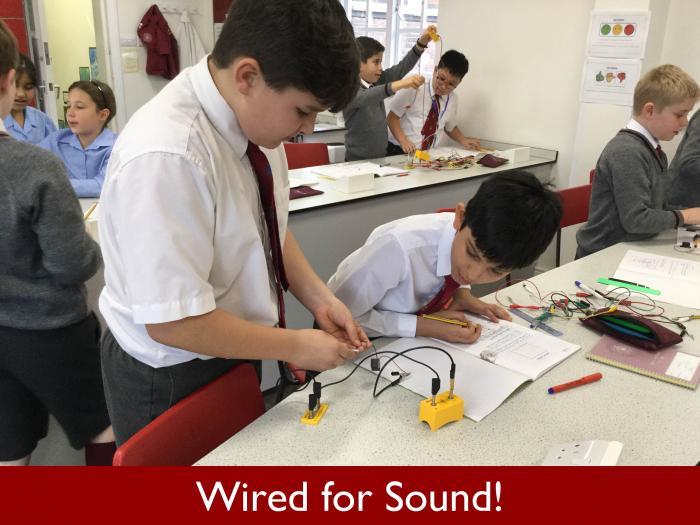
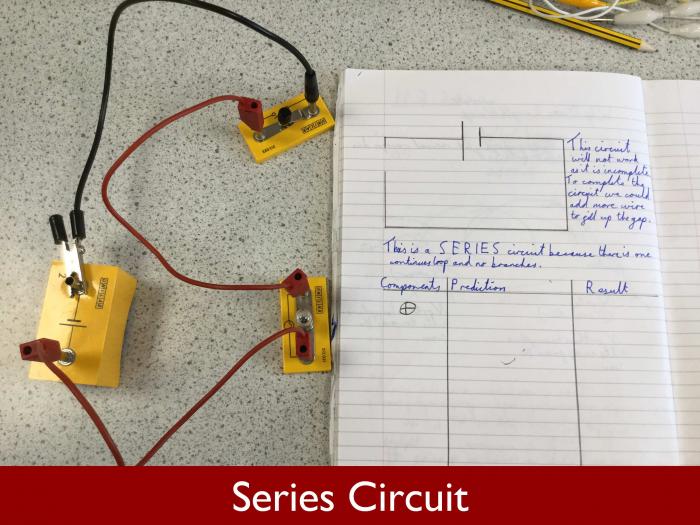
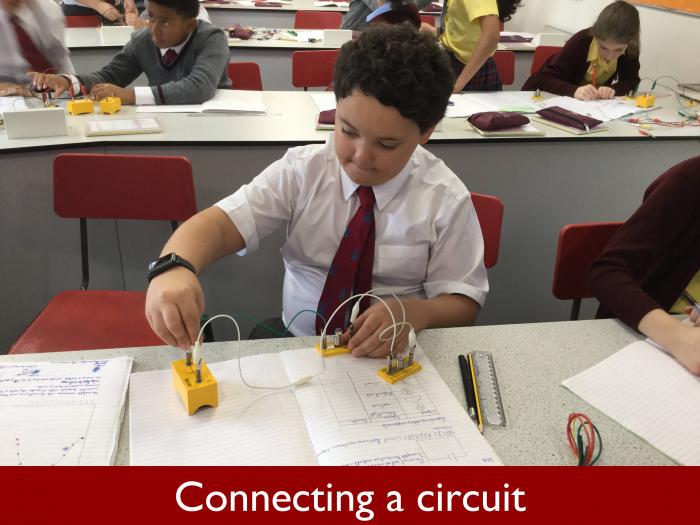
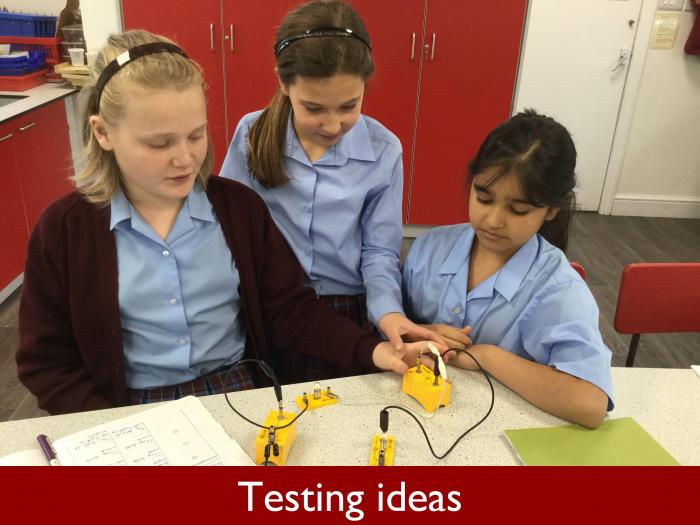
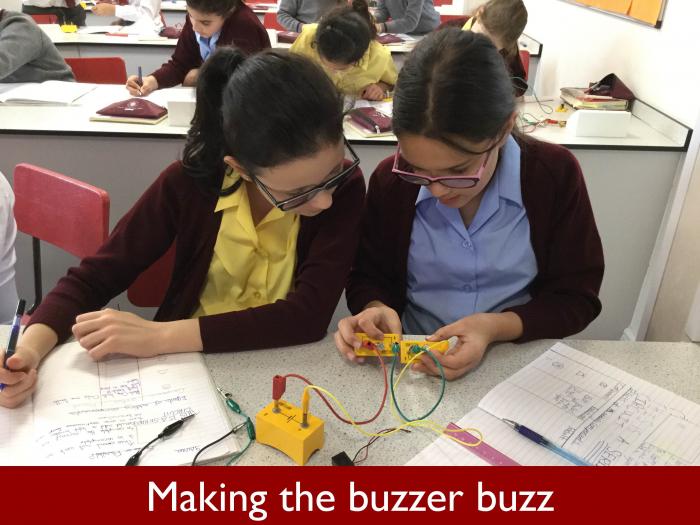
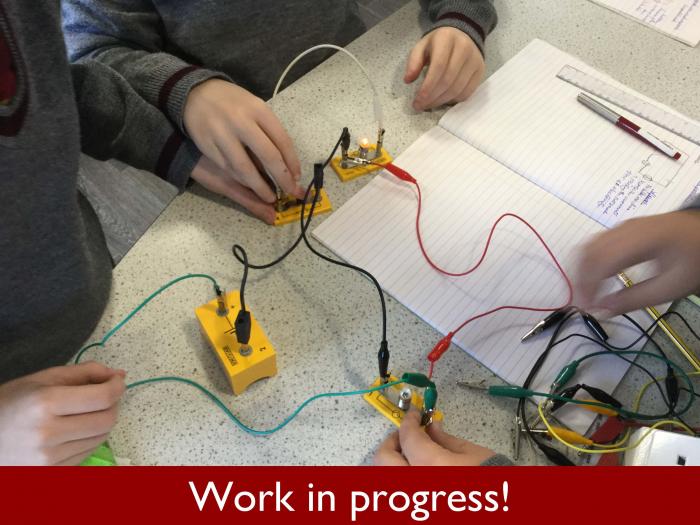
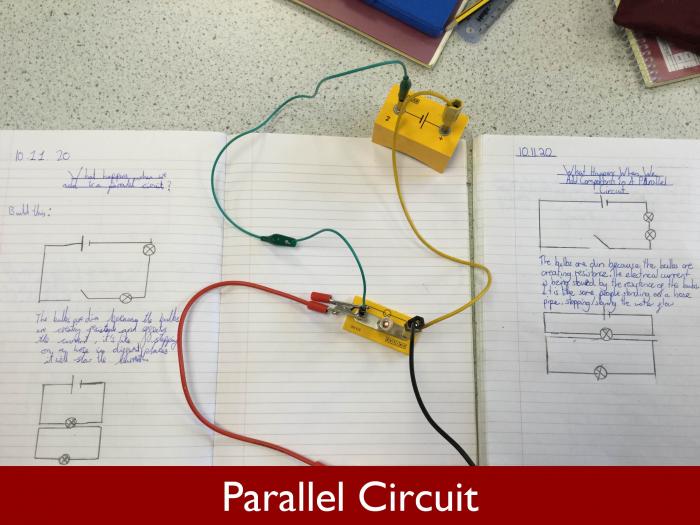
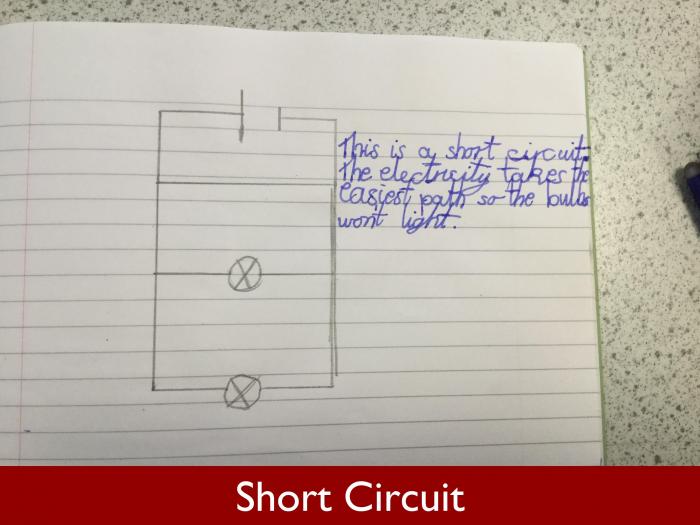
Wired for Sound
When Mrs Sliney planned Form 6’s science lessons for this half term, she was delighted to include lots of practical exploration of electrical circuits. Practical lessons enable children to develop their investigative skills, work collaboratively and, above all, to have fun. Perfect ingredients for learning but, for the teacher, it comes at a price. Where you have fun, you have noise and, as Mrs Sliney climbed the stairs to the science lab for 6PR’s lesson, she remembered this was the lesson with the bulbs and buzzers, and she had forgotten her ear defenders. Poor Mrs Sliney!
Although the children have explored electrical circuits before, Mrs Sliney thought it would be wise to start with a quick recap. The key point she wanted to emphasise was that a basic circuit is connected in series, with the current flowing from the positive pole of the battery, through the components of the circuit in turn and back again into the negative pole of the battery. The children were quick to connect these series circuits in their groups, filling the lab with sound and light.
What Mrs Sliney wanted to know was this – what would happen if we connected other components in the circuit? Would we get more light or louder buzzing? No, you wouldn’t, the children discovered. The lights dimmed and some of the additional buzzers didn’t work at all, leading some of the children to complain that their buzzers were broken.
Of course, the buzzers weren’t really broken. Mrs Sliney explained to the class that what they were seeing was the effect of resistance. She likened it to people standing on a garden hosepipe on a hot summer day. If someone stands on the hosepipe, the flow of water slows to a trickle. If two people stand on the hosepipe, the flow stops altogether because the water can’t get through. In an electrical circuit, the strength of the current is insufficient to withstand the extra resistance.
You could solve the problem immediately by adding a second power source but in practical terms – for instance in the electrical circuits we have in our homes – this isn’t a viable option. Mrs Sliney challenged the children to reconfigure their circuits in such a way that both buzzers and bulbs continue to work with equal effectiveness.
A great deal of frantic activity ensued, with a tangle of wires everywhere. Some children inadvertently connected short circuits, whereby the electricity takes the shortest possible path it can, by-passing some of the components. Mrs Sliney took the opportunity to talk through some of the difficulties and dangers associated with short circuits.
Finally, however, Noah and Karan managed to solve the problem. They created what is known as a parallel circuit, in which individual components have their own branch of their main circuit. They then successfully translated their breakthrough idea to a circuit diagram in their books, greatly impressing Mrs Sliney.
In future lessons, the children will use the learning from this lesson to solve some circuit-related problems, such as making a doorbell work effectively. They will explore dimmer switches and variable resistance before creating a circuit to support an invention of their own.